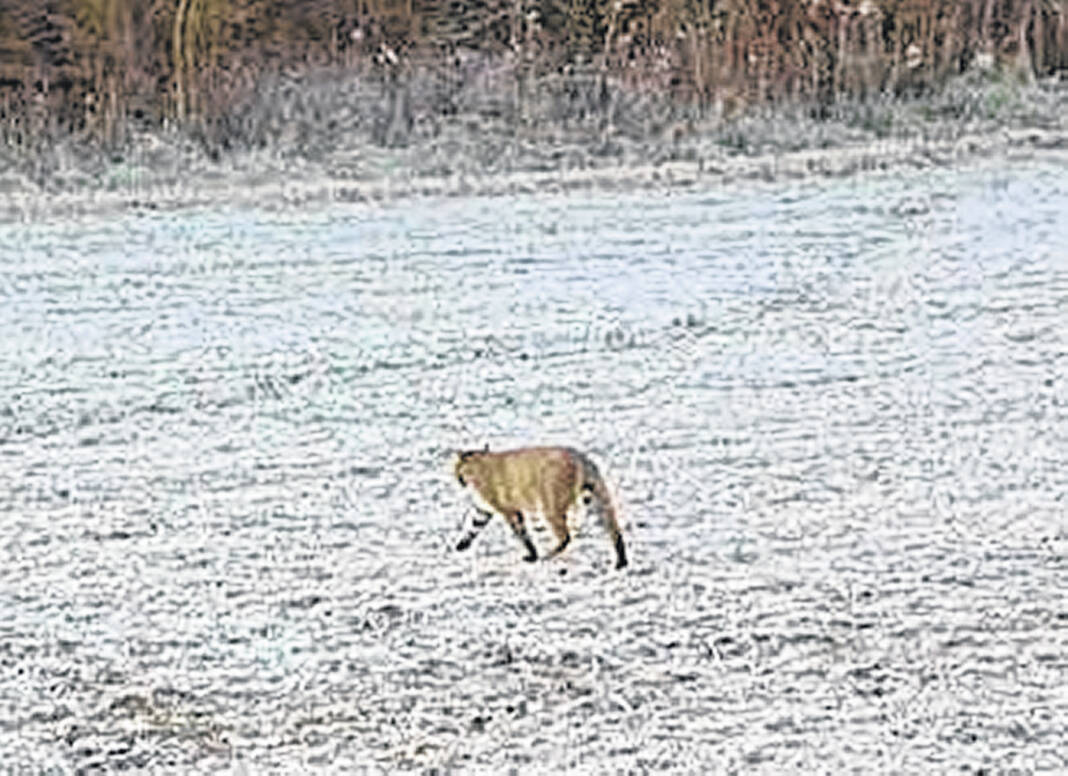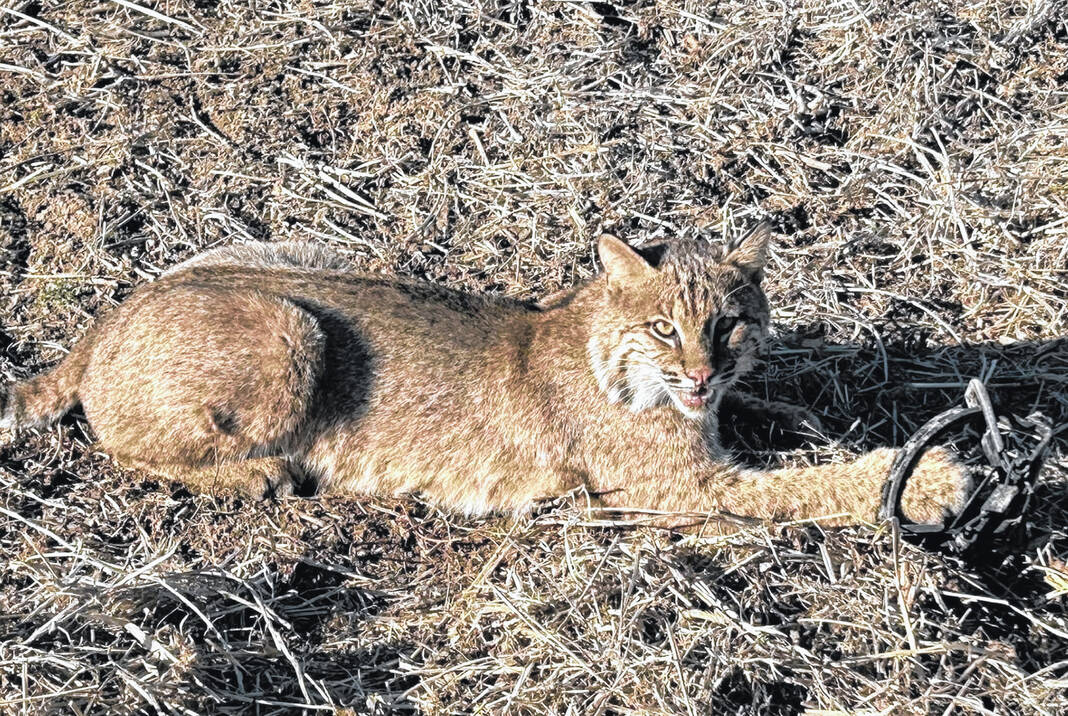
A bobcat caught on a Trail-cam facing a field on Hadley Road in Clarksville.
Courtesy of Christine Snyder

A bobcat caught in a trap on a farm on Doster Road in Wilmington.
Courtesy of Butch Barhorst
CLINTON COUNTY — Recent bobcat sightings have locals stunned and excited.
Multiple residents have shared on Facebook their recent encounters with Ohio’s only native wild cat.
Nancy Williams, who lives on Doster Road, posted on Facebook on Wednesday that a trapper “caught his first Buckeye Bobcat” on their farm.
“This hunter – Butch Barhorst – goes out west and traps for ranchers so he’s done this kind of thing before,” Williams told the News Journal. “He was so thrilled to trap it. I didn’t know they were around the area.”
Barhorst released the unharmed animal back into the wild knowing there was no trapping (or hunting) of bobcats in Ohio.
Barhorst, who told the News Journal he had been trapping since he was 11, described seeing the wildcat as “like a little kid looking under the Christmas tree.” He had been trapping coyotes on Nancy Williams’ family farm for years. He described it to the point where he felt like he was part of their family.
He dubbed the trapped animal a “Buckeye Bobcat” as a tribute to Williams’ father who was a big Ohio State fan (along with the rest of the family).
“She was tickled by that,” he said.
Christine Snyder shared an image from a Trail-cam on Tuesday showing a bobcat walking through a field behind their house on Hadley Road in Clarksville. The image was first shared by Todd Fairchild, who farms the field where the bobcat was spotted.
Fairchild told the News Journal he had a couple of Trail-cams set up in the area to monitor the areas he farms and also keep an eye on locations where he hunts. This was the first time he had ever seen the cat in the area.
“I thought it was cool to see,” he said. “It’s a pretty good-sized one from what I can tell. Maybe 25-30 pounds.”
Terri Thobaben, who lives on State Route 180, told the News Journal a man who hunts on her property appeared on a Trail-cam they had set up by a prairie they have. A family friend on Hale Road told them they saw a mother bobcat with her cubs.
Thobaben finds it very exciting.
“The more (wildlife) diversity the better,” said Thobaben. “We have coyotes, I hear them every night. Now we have bobcats so that’s exciting.”
Terri and her husband (Bob) are retired science teachers who have lived in Clinton County for 42 years and have never seen bobcats here.
“Knowing there’s more critters out in the woods … I’m glad to see they’re back,” she said. “I think it puts things in balance.”
Kathy Garza-Behr, wildlife communications specialist with the Ohio Department of Natural Resources (ODNR)-Division of Wildlife, told the News Journal that bobcats have returned to many places in the state where they hadn’t been previously.
“Recorded data shows that bobcat populations are thriving and expanding in Ohio, with more than 500 confirmed sightings by the Ohio Division of Wildlife annually from 2019 to 2021. Habitat suitability is highest in southeast and southern counties, and they are found across Ohio,” said Garza-Behr in an email.
On the ODNR website’s page on bobcats, it indicates bobcats are not likely to attack humans.
Residents in towns and villages don’t need to fret, according to the webpage.
“Bobcats do make use of human altered landscapes in rural, suburban, and urban areas, but they avoid areas of intense agriculture, highly developed areas, or areas with a large amount of human activity,” according to the webpage.
Garza-Behr advises locals who see a bobcat to go online and fill out a survey at https://survey123.arcgis.com/share/987f2ade0037405ea9ff1819aab040a8?portalUrl=https://gis.ohiodnr.gov/portal
“The Division of Wildlife compiles yearly information. Sightings are always exciting and trail camera photos have given us a peek into these very secretive animals’ life,” said Garza-Behr.
Barhorst said similarly that if anyone sees a bobcat they should take a picture if they can and report the sighting to the Wildlife Division. He advised that if more people report the sighting, it could lead to an official hunting season in Ohio for bobcats.
Garza-Behr added that residents with concerns can call 1-800-WILDLIFE to speak to wildlife management staff.
Reach John Hamilton at 937-382-2574

